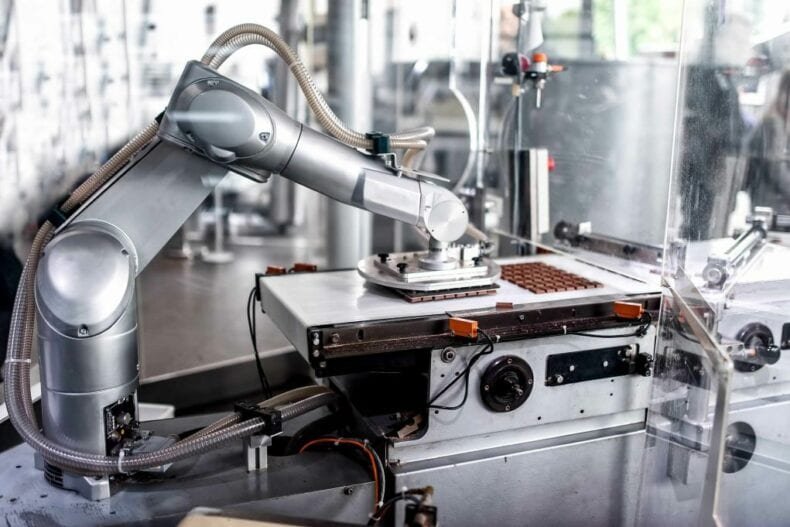Applications Across Industry Sectors
Articulated robots have become indispensable thanks to their versatility, precision, and adaptability. Their ability to perform tasks as wide-ranging as car assembly to vial filling with high levels of efficiency makes them ideal for sectors where precision and regulatory adherence are vital. Below are some of the key industries where articulated robots are making a considerable impact:
Automotive – the largest adopter of articulated robots. Common robot applications include welding car frames, installing windshields and parts, painting and coating using paint robots, as well as precision assembly using six-axis robots.
Electronics – with applications requiring high levels of precision, articulated robots are widely used for PCB assembly, soldering micro components, and handling delicate, small parts with accuracy.
Food & Beverage – a reliable solution for a wide range of applications. Robots are typically used in the food and beverage sector for packaging and palletising, sorting products, and quality inspection using hygiene-rated robots and advanced vision software.
Aerospace – strict requirements for precision engineering can be achieved using articulated industrial robots. These are used for drilling and fastening, surface finishing and coating tasks, as well as handling composites.
Pharmaceuticals and Medical Devices – also highly regulated. The pharmaceuticals and medical devices industries have adopted articulated robots for a wide range of tasks, including cleanroom packaging, filling vials and syringes, and assembly of medical instruments.
General Manufacturing – due to their robust and flexible capabilities. General manufacturing tasks include applications such as CNC machine tending, material handling and sorting, and quality inspection using AI and vision systems.
These diverse applications demonstrate the flexibility and scalability of articulated robots across a range of manufacturing sectors. From enhancing quality control in electronics or increasing productivity in food processing, their role supports companies as they strive to achieve greater efficiency, safety, and agility in a dynamic and challenging marketplace.






